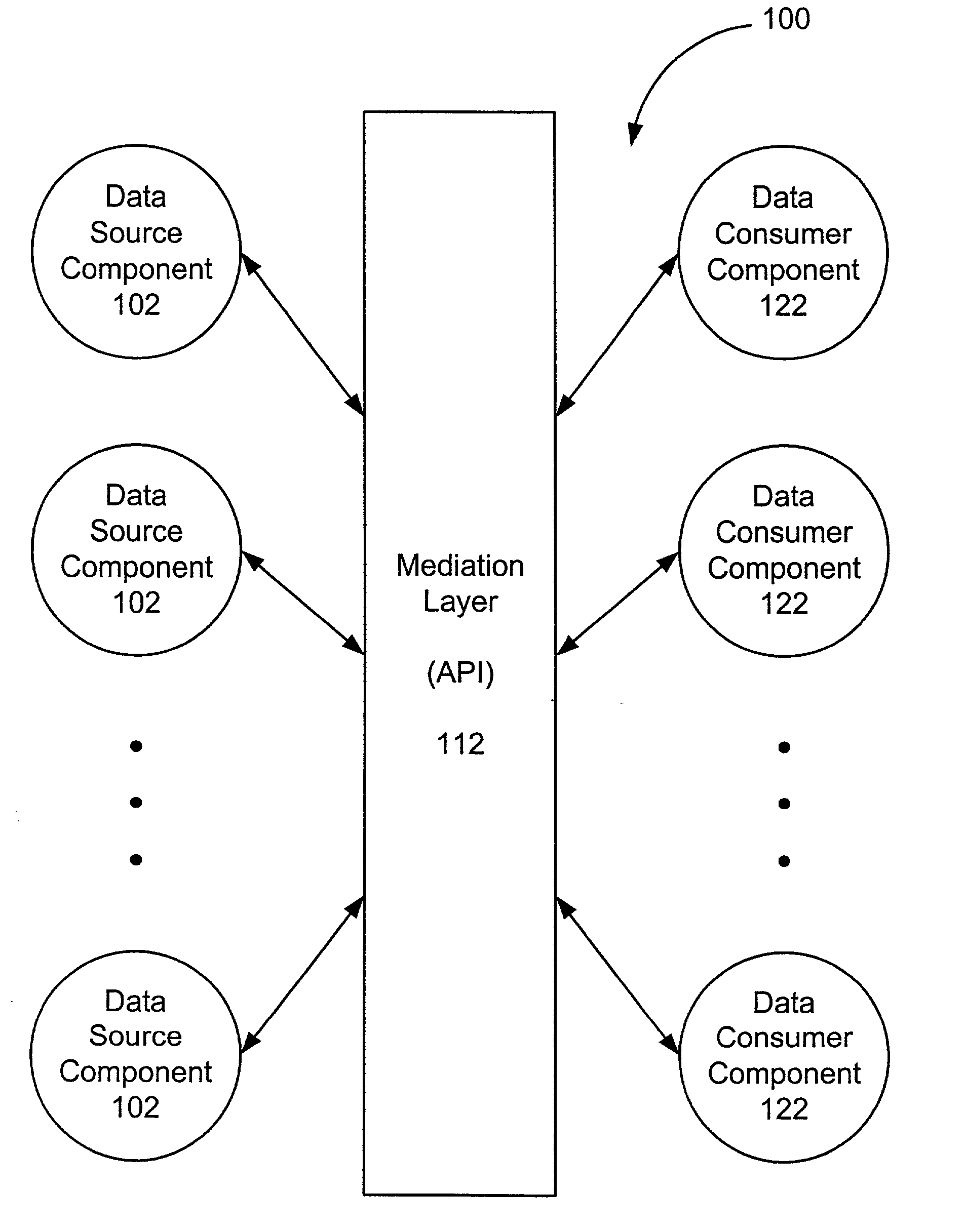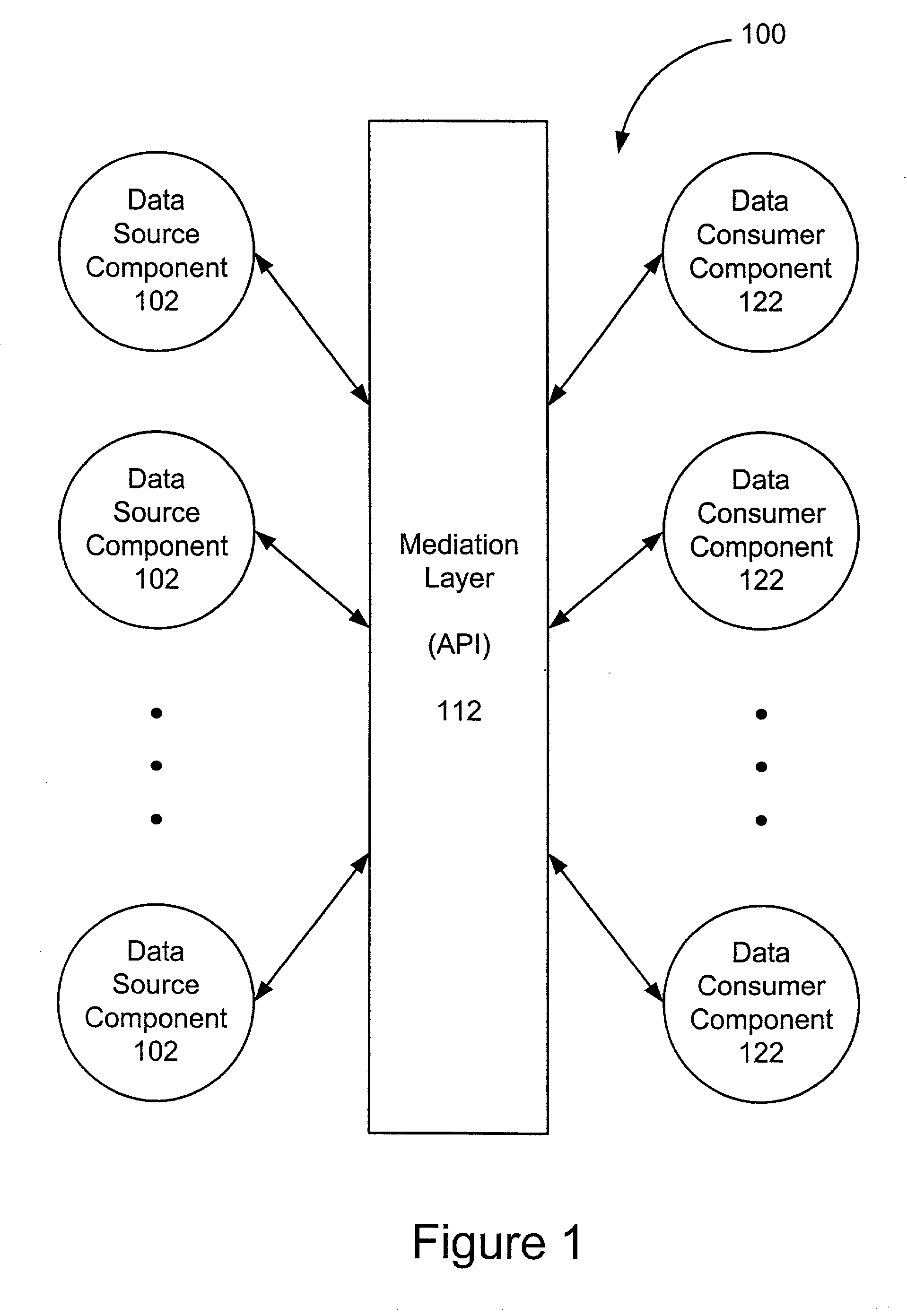Extensible information system
- Summary
- Abstract
- Description
- Claims
- Application Information
AI Technical Summary
Benefits of technology
Problems solved by technology
Method used
Image
Examples
example 2
[0230] Example 2
[0231] FIGS. 18A, 18B, 19A, and 19B list two Java source files. These two Java source files function similarly to those listed in FIGS. 15 and 16. Modifications or additions to the code listed in FIGS. 15 and 16 are marked with " / *{* / " " / *}* / }." The resulting output is shown in FIG. 20.
[0232] FIGS. 18A and 18B extend the previous Hello World class (FIG. 15) by using the JavaBean standard property change event distribution classes so that other XIS objects are automatically notified when its properties are changed (within the set methods). The java.beans.PropertyChangeSuppor-t instance takes care of maintaining lists of listeners and sending events to them. It is only necessary to implement wrapper methods to pass listeners to this contained instance (the first block of new code after the imports 1802) and then to call the firePropertyChange method 1804 on it when anything is actually changed. This is performed in the setValue 1808 and setMyColor 1810 methods. Value ...
example 3
[0252] Example 3 functions similarly to Example 2 above, but enable finer control over the data item attributes exposed within XIS. In particular, the Hello World object is explicitly wrapped in a Translator rather than simply feeding it to XIS and letting it rely on reflection to display and manipulate the data. This allows some properties of the raw data item to be hidden, and allows other ones to be better "understood" within XIS. The Hello World Translator.java file contains the Translator.
[0253] Referring to FIG. 21, the property change event-handling portion of code 1506 found in FIG. 18A has been removed from the set methods. These functions are now handled in the Hello World Translator class (FIGS. 22A-22C), which is registered with XIS by the TranslatorRegistry static call at the beginning of that class.
[0254] Referring to FIGS. 22A to 22C, this file contains the Hello World Translator class 2202 that wraps the Hello World object. When an INFOBEAN encounters a raw data item...
example 5
[0338] Example 5
[0339] The Example 5 application is contained in three Java source files, HelloWorld.java, HelloWorldTranslator.java, and TestHarness.java. The source files for this Example are explained below. The resulting outputs are shown in FIGS. 38A and 38B. Non-contextual information is transferred in this Example.
[0340] The Java source files in Example 5 modify those from Example 3 or 4 to demonstrate the use of drag and drop facilities within XIS, along with a more complex view. As before, changes from the previous step are marked by open and close commented braces.
[0341] The table below (Table XX) shows a code snippet that replaces a portion of code in the Hello World.java file shown in Example 3. The code portion below replaces the portion of code 2102 found in FIG. 21 to implement Example 5.
20 TABLE XX / *{* / private String myName; public HelloWorld(String myName) { this.myName = myName; } public String toString() { return myName; } / *}* /
[0342] With the above modification...
PUM
 Login to View More
Login to View More Abstract
Description
Claims
Application Information
 Login to View More
Login to View More - R&D
- Intellectual Property
- Life Sciences
- Materials
- Tech Scout
- Unparalleled Data Quality
- Higher Quality Content
- 60% Fewer Hallucinations
Browse by: Latest US Patents, China's latest patents, Technical Efficacy Thesaurus, Application Domain, Technology Topic, Popular Technical Reports.
© 2025 PatSnap. All rights reserved.Legal|Privacy policy|Modern Slavery Act Transparency Statement|Sitemap|About US| Contact US: help@patsnap.com



